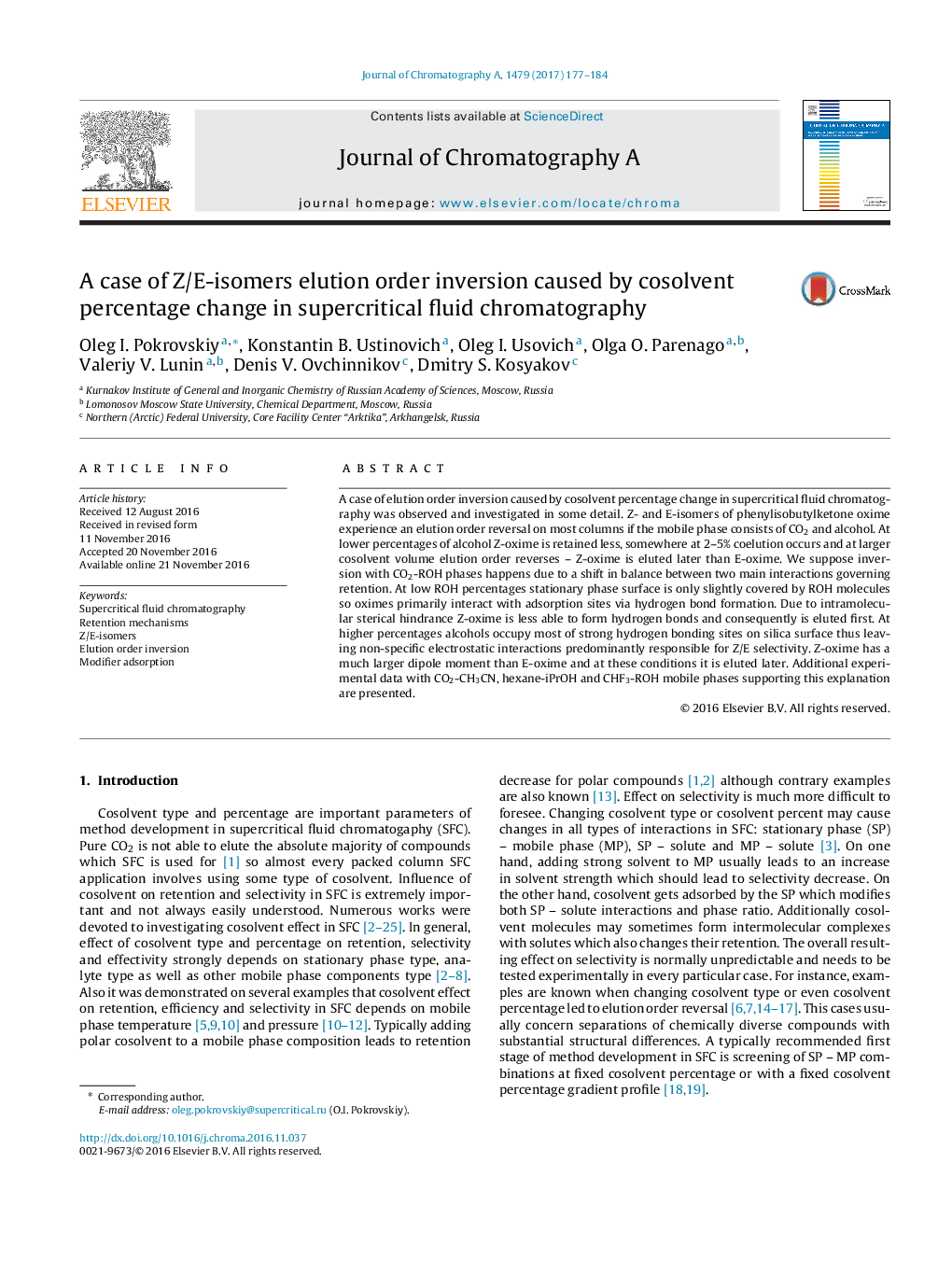| Article ID | Journal | Published Year | Pages | File Type |
|---|---|---|---|---|
| 5135579 | Journal of Chromatography A | 2017 | 8 Pages |
â¢Z/E-isomers elution order inversion caused by cosolvent percentage in SFC is reported.â¢Cosolvent adsorption onto stationary phases affects retention mechanism.â¢Inversion occurs only with CO2âROH mobile phases.â¢CO2 behaves differently than both hexane and CHF3.
A case of elution order inversion caused by cosolvent percentage change in supercritical fluid chromatography was observed and investigated in some detail. Z- and E-isomers of phenylisobutylketone oxime experience an elution order reversal on most columns if the mobile phase consists of CO2 and alcohol. At lower percentages of alcohol Z-oxime is retained less, somewhere at 2-5% coelution occurs and at larger cosolvent volume elution order reverses - Z-oxime is eluted later than E-oxime. We suppose inversion with CO2-ROH phases happens due to a shift in balance between two main interactions governing retention. At low ROH percentages stationary phase surface is only slightly covered by ROH molecules so oximes primarily interact with adsorption sites via hydrogen bond formation. Due to intramolecular sterical hindrance Z-oxime is less able to form hydrogen bonds and consequently is eluted first. At higher percentages alcohols occupy most of strong hydrogen bonding sites on silica surface thus leaving non-specific electrostatic interactions predominantly responsible for Z/E selectivity. Z-oxime has a much larger dipole moment than E-oxime and at these conditions it is eluted later. Additional experimental data with CO2-CH3CN, hexane-iPrOH and CHF3-ROH mobile phases supporting this explanation are presented.
